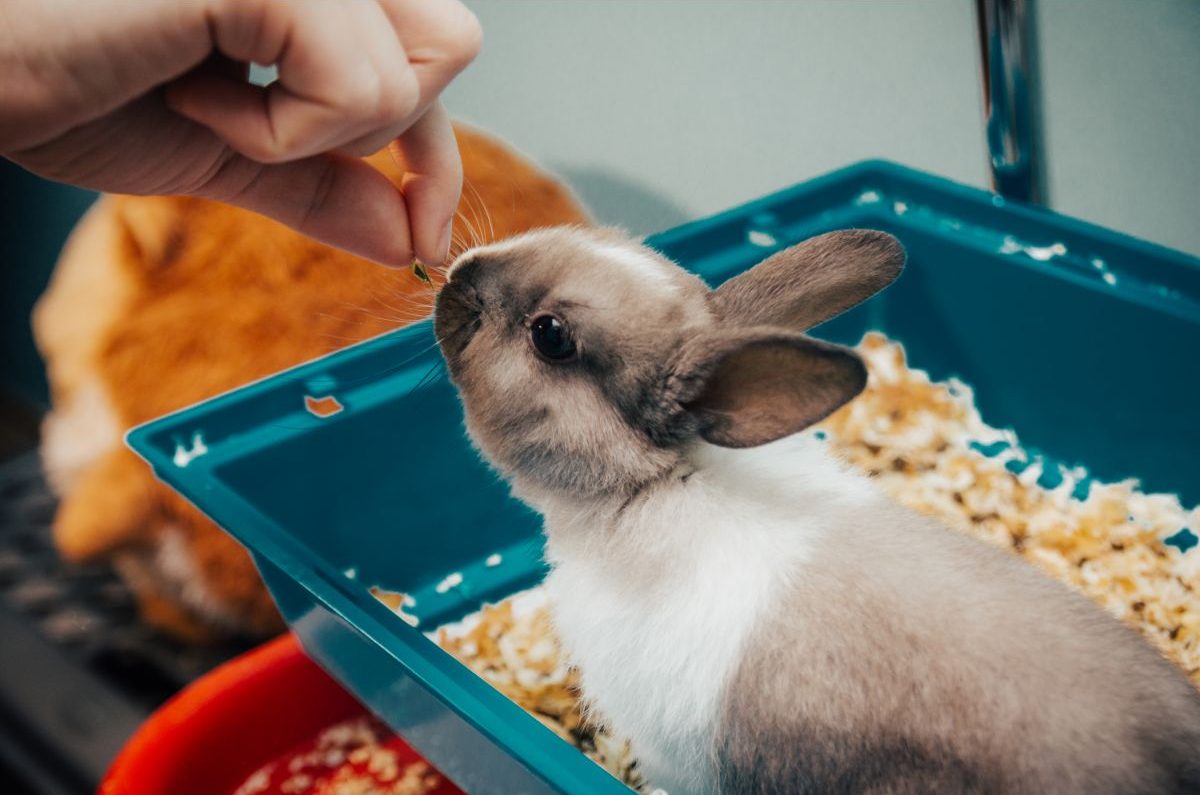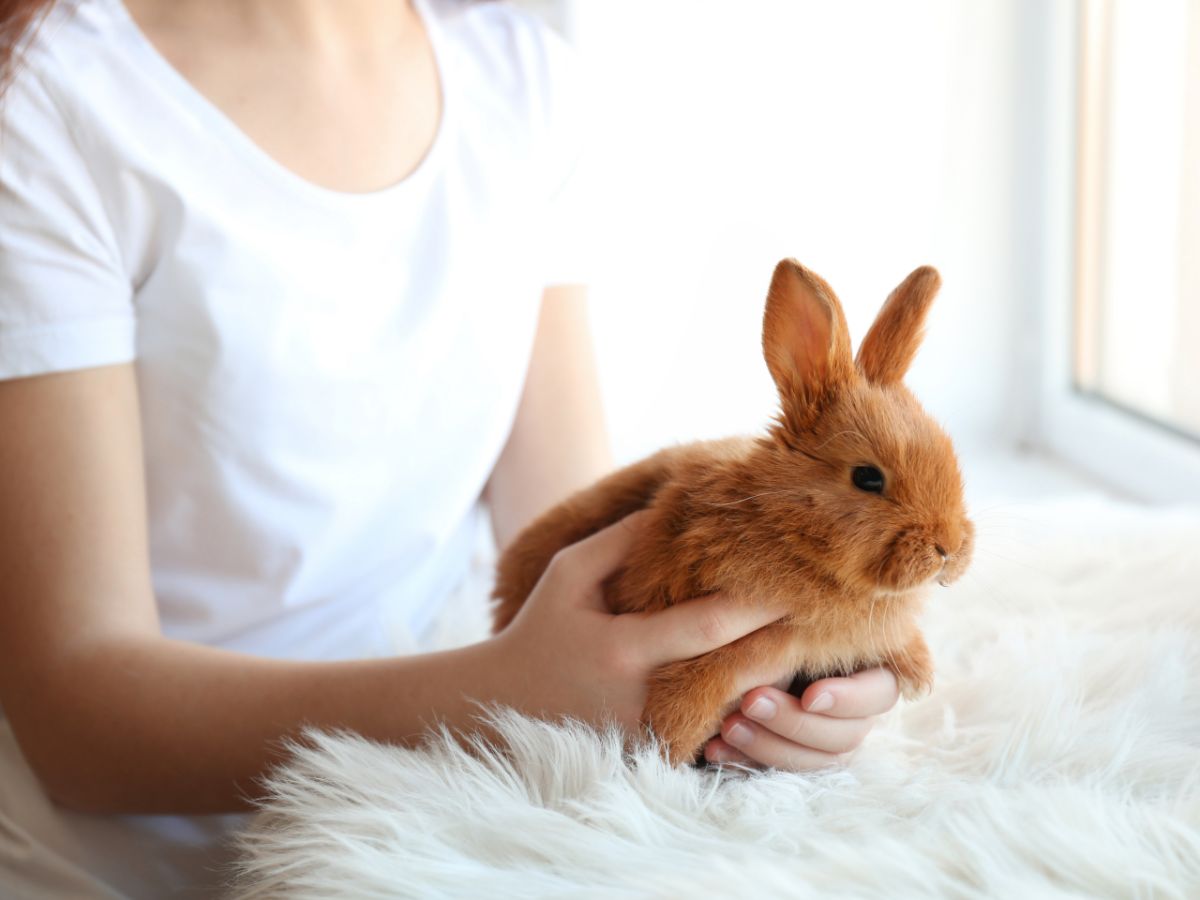Rabbits love to feel nice and cozy, especially when they nap. They are very playful and affectionate. You want to ensure that your pet rabbit is safe and comfortable. The next step is setting up a rabbit cage before taking your bunny home.
Set up your rabbit’s cage before you take it home. The size of your rabbit’s cage will depend on the size of the rabbit when it is fully grown. Your rabbit’s cage must have soft bedding, food, water, and toys. Make sure you set up a cage in a safe area. Clean out the full cage once a week.
Setting up your rabbit’s cage might sound easy, but you must keep essential things in mind like bedding, a spacious cage, and its diet. We will investigate how you can set up a rabbit cage effortlessly.
Contents
How Should You Set Up A Rabbit Cage?
When you decide it’s time to get a pet rabbit, setting up a cage for your furry friend is essential. Bunnies make great pets and are very active and social. Your bunny must feel comfortable and secure in its cage. Below is the perfect guide on how to set up your rabbit cage.
1. Choose An Ideal Cage And Supplies
Cages are better for temporary accommodation. It does not allow your bunny to hide. If a bunny is exposed to views on all sides of the cage, it will feel stressed. It’s advisable to put a box in the cage. The box will give it some privacy.
A wire cage is ideal for temporary accommodation, especially when your rabbit spends time in your family room. You must see that your rabbit doesn’t chew your electrical wires. A box is ideal for privacy and a safe place for the rabbit to sleep.
2. Pick The Right Size Cage
Picking the right cage size is essential since rabbits differ in size. For example, the mini-lop rabbit weighs 2-3 lbs. to the massive Flemish rabbit, which weighs up to 22 lbs. Based on the size, the floor area and height of your rabbit cage will vary. Remember to consider the adult weight of your rabbit. Regarding height, your rabbit cage should be big enough for your rabbit to sit upright on its hind legs.
In the wild, rabbits live in burrows. They feel safe when they’re enclosed and in the dark. Ensure your cage has two rooms. One room must offer your rabbit complete privacy. The minimum size for two small rabbits is 150 cm long by 60 cm wide and 60 cm tall. For more giant rabbits, the dimensions would differ. The recommended minimum size for more giant rabbits is at least 185 cm long by 90 cm wide by 90cm tall.
3. Ensure The Cage Has A Solid Floor
Pododermatitis is a condition rabbits suffer from sitting on hard floors and wet bedding. This condition causes pressure sores on the back of its hind legs. It’s very uncomfortable for your rabbit to sit on the wire mesh of its cage. It is unsuitable for flooring. Cover the wire bottom with something like plywood, and then you can cover it with soft bedding.
4. Buy A Cage With Sides Made Of Wire
Getting a cage with wire sides is essential to ensure that your rabbit gets enough and sufficient airflow.
You can buy an open-top cage. This cage looks like a puppy’s cage. Your rabbit will have more freedom to move around and feel less confined.
5. Ensure The Bottom Of The Cage Has A Urine Guard
The tray must have high and solid sides because rabbits tend to spray when they urinate. The high and solid sides will also prevent your rabbit from spreading straw over the floor.
6. Pick The Right Rabbit Litter Box
If your rabbit lives indoors, training it on how to use a litter box is essential. For your rabbit’s convenience, you can place a triangular litter box in the corner of its cage. You must be patient since your rabbit won’t start using the litter box immediately. Once it knows to use the litter box, it will go there every time.
7. Buy A Food Bowl And A Water Sipper
Rabbits are not fond of stretching their heads to reach their hay rack, so place it as low as possible. To ensure your rabbit cannot tip over its food bowl, it’s better to invest in heavy, flat-bottomed bowls. Water sippers are comfortable for rabbits when they sip water.
8. Choose The Ideal Location For Your Rabbits Cage
The location of your rabbits’ cage is vital. Always put its cage in a well-ventilated area that’s not too hot or cold. Placing its cage in a basement or an attic can affect your rabbit’s delicate lungs. Your rabbit also needs some sunlight, but not too much. Rabbits don’t like noise or sudden movements. An ideal area to place would be a spare room, but make sure you interact with it regularly.
9. Ensure There Are No Wires Or Objects With Sharp Edges
Bear in mind that your rabbit won’t just stay in its cage the whole time. It needs a room where it can move around freely and get some exercise. Make sure the room doesn’t have wires around or objects with sharp edges.

10. Provide Your Rabbit With Thick Bedding
Make sure your rabbit has thick bedding to protect its paws. The bigger your rabbit is, the deeper the bedding should be. Straw, sawdust, or hay can line out the cage. The best option is hay. Hay isolates heat in the winter and is completely safe for your rabbit to chew on. You should provide at least 5 – 6 inches of bedding if your bunny is regular-sized. More giant rabbits will require more bedding.
Spot clean your rabbit’s cage daily by removing urinated hay and pellets. You should clean out your rabbit’s enclosure thoroughly once a week. You can use white vinegar and water to clean it. Rabbits are very hygienic animals and love it when their cage is clean. Never put cat litter in your rabbits’ cage; it can be fatal.
11. Get Your Rabbit Food
Rabbits love eating grass, but hay can be an excellent substitute. It keeps their teeth healthy, and they won’t get overweight. You can treat your bunny with some fruit and vegetables too. Try to give different fruits or veggies each day for a well-balanced diet. Provide fresh water for your rabbit daily by using a sipper drinker. It’s a lot more comfortable for them.
12. Make Sure Your Rabbit Is Not Bored
Rabbits are active animals and love to play. Place toys in their cage to play around with. Suitable toys are cardboard tubes or cardboard boxes with holes in them. If you buy toys for your furry friend, ensure it is rabbit safe.
Is It Important For Your Rabbit To Have A Cage?
Your rabbit needs to have a cage where it can sleep and feel secure. Purchasing the wrong size rabbit cage can lead to injuries and health consequences that can be fatal. You will also struggle with a badly behaved and unhappy bunny.
Conclusion
Setting up your rabbit’s cage is one of the first things you will do once you welcome your new fur baby home. You will make your pet rabbit comfortable with a cage that suits its needs and is spacious enough for its size. If your bunny is happy, everything is going well!




